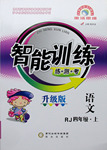
He was asleep the moment his head touched the pillow.
 智能训练练测考系列答案
智能训练练测考系列答案科目:高中英语 来源:2009届宁夏银川一中高三年级第一次月考测试、英语试卷 题型:050
| |||||||||||||||||||||||||||||||||||||||||||||
查看答案和解析>>
科目:高中英语 来源: 题型:阅读理解
Sign has become a scientific hot button. Only in the past 20 years have specialists in language study realized that signed languages are unique ----a speech of the hand. They offer a new way to probe how the brain generates and understands language, and throw new light on an old scientific controversy (争论): whether language, completed with grammar, is something that we are born with, or whether it is a learned behavior. The current interest in sign language has roots in the pioneering work of one rebel teacher at Gallaudet University in Washington, D.C., the world’s only liberal arts university for deaf people.
When Bill Stokoe went to teach English, the school enrolled him in a course in signing. But Stokoe noticed something odd; among themselves, students signed differently from his classroom teacher.
Stokoe had been taught a sort of gestural (手势) code, each movement of the hands representing a word in English. At the time, American Sign Language (ASL) was thought to be no more than a form of pidgin English (混杂英语). But Stokoe believed the “hand talk” his students used looked richer. He wondered: Might deaf people actually have a genuine language? And could that language be unlike any other on Earth? It was 1955, when even deaf people dismissed their signing as “substandard”. Stokoe’s idea was academic heresy (异端邪说).
It is 37 years later. Stokoe —now devoting his time to writing and editing books and journals and to producing video materials on ASL and the deaf culture --- is having lunch at a café near the Gallaudet campus and explaining how he started a revolution. For decades educators fought his idea that signed languages are natural languages like English, French and Japanese. They assumed language must be based on speech, the modulation(调节) of sound. But sign language is based on the movements of hands, the modulation of space. “What I said,” Stokoe explains, “is that language is not mouth stuff (素材)--- it’s brain stuff.”
1.The study of sign language is thought to be ________.
A.a new way to look at the learning of language
B.a challenge to traditional views on the nature of language
C.an approach to simplifying the grammatical structure of a language
D.an attempt to clarify misunderstanding about the origin of language
2.Most educators objected to Stokoe’s idea because they thought _____.
A.sign language was not extensively used even by deaf people
B.sign language was too artificial to be widely used and understood
C.a language should be easy to use and understand
D.a language could only exist in the form of speech sounds
3.Stokoe’s argument is based on his belief that _____.
A.sign language is as efficient as any other language
B.sign language is derived from natural language
C.language is a system of meaningful codes
D.language is a product of the brain.
查看答案和解析>>
科目:高中英语 来源: 题型:阅读理解
Sign has become a scientific hot button. Only in the past 20 years have specialists in language study realized that signed languages are unique ----a speech of the hand. They offer a new way to probe how the brain generates and understands language, and throw new light on an old scientific controversy (争论): whether language, completed with grammar, is something that we are born with, or whether it is a learned behavior. The current interest in sign language has roots in the pioneering work of one rebel teacher at Gallaudet University in Washington, D.C., the world’s only liberal arts university for deaf people.
When Bill Stokoe went to teach English, the school enrolled him in a course in signing. But Stokoe noticed something odd; among themselves, students signed differently from his classroom teacher.
Stokoe had been taught a sort of gestural (手势) code, each movement of the hands representing a word in English. At the time, American Sign Language (ASL) was thought to be no more than a form of pidgin English (混杂英语). But Stokoe believed the “hand talk” his students used looked richer. He wondered: Might deaf people actually have a genuine language? And could that language be unlike any other on Earth? It was 1955, when even deaf people dismissed their signing as “substandard”. Stokoe’s idea was academic heresy (异端邪说).
It is 37 years later. Stokoe —now devoting his time to writing and editing books and journals and to producing video materials on ASL and the deaf culture --- is having lunch at a café near the Gallaudet campus and explaining how he started a revolution. For decades educators fought his idea that signed languages are natural languages like English, French and Japanese. They assumed language must be based on speech, the modulation(调节) of sound. But sign language is based on the movements of hands, the modulation of space. “What I said,” Stokoe explains, “is that language is not mouth stuff (素材)--- it’s brain stuff.”
1.The study of sign language is thought to be ________.
A.a new way to look at the learning of language
B.a challenge to traditional views on the nature of language
C.an approach to simplifying the grammatical structure of a language
D.an attempt to clarify misunderstanding about the origin of language
2.Most educators objected to Stokoe’s idea because they thought _____.
A.sign language was not extensively used even by deaf people
B.sign language was too artificial to be widely used and understood
C.a language should be easy to use and understand
D.a language could only exist in the form of speech sounds
3.Stokoe’s argument is based on his belief that _____.
A.sign language is as efficient as any other language
B.sign language is derived from natural language
C.language is a system of meaningful codes
D.language is a product of the brain.
查看答案和解析>>
湖北省互联网违法和不良信息举报平台 | 网上有害信息举报专区 | 电信诈骗举报专区 | 涉历史虚无主义有害信息举报专区 | 涉企侵权举报专区
违法和不良信息举报电话:027-86699610 举报邮箱:58377363@163.com